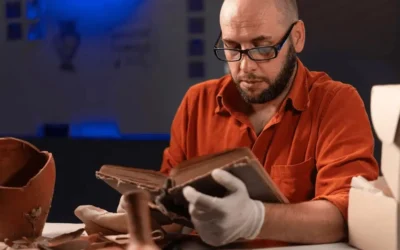How Electronic Records and Physical Records Differ
Margot Note
Most archivists would agree that an electronic record is a record in electronic form and a record is a record, regardless of how it is created or the medium on which it is stored.
According to the ISO 15489, “electronic records are those recorded on electronic storage media and produced, communicated, maintained, or accessed by means of electronic equipment.” Note that the definition of an electronic record does not say much about what it is other than a record on electronic media.
There are two differences between traditional and electronic records. Although there are electronic counterparts for paper records, there are many electronic records for which there are typically no hard copy counterparts. In addition, having records in electronic form changes the way people use, value, manage, and preserve them.
Traditionally, those with an archival or public sector background have one perspective, while those who have worked in records management or the private sector have another. Although this is an overly broad characterization, it has a basis in fact. How people view records depends on their backgrounds and the organizations that employ them.
Defining a Record
Definitions of a record abound. Each has its value, and the reason for all the examples is that different people will take different views of what a record is, and therefore, it is worth knowing what the permutations are, since how one defines records demonstrates how one seeks to manage records.
The ISO definition of a record (and electronic record) is the world standard. Other definitions remain, partly for historical interest and partly because they offer some useful insights. According to the ISO, records are documents created, received, and maintained as evidence and information by an agency, organization, or person in pursuance of legal obligations or business transactions. The definition further states that records have four defining characteristics:
- Authenticity means that content, context, and structure persist.
- Reliability stresses that the records are trustworthy.
- Integrity means that the records are complete and unchanged.
- Usable means that records can be located, retrieved, presented, and interpreted.
Archival Records
The definitions of records have three parts. First, archivists need to know what the record is. Most people focus on a record being evidence of a transaction. It is also a container of information, information relating to what the record is evidence of, and other uses, such as secondary value in archival terms. Next, a record depends on its characteristics, such as content, context, and structure. Lastly, what is the value of the record? Some definitions include why the record is preserved or maintained—evidential or informational values, for example. Others do not. Being evidence of a transaction and having characteristics such as reliability are nice but managing them costs money, so decision-makers need to know why they are spending money to preserve these records.
Each of the standard part of the definition poses its own set of questions. For example, if a record is evidence of a transaction, then what is a transaction? Since records cost money to create and maintain, what transactions need to be documented and what records must be retained to do so?
Records are supposed to have characteristics such as integrity, meaning that the record is complete and unchanged, but that characteristic needs to be demonstrable by providing evidence that it is complete and unchanged. That requires management, and management costs money. How do you demonstrate that? For example, must everything be digitally signed to be demonstrably authentic?
Lastly, who decides what records need to be retained and for what purpose?
The Archivist’s Role
The definitions of records—electronic or physical—will continue to be debated. A better way to define records is to ask what the asset is a record of. What type of transaction does it document? Who considers it a record? Who has a stake in it and its creation and maintenance? Why is it being maintained? What purposes are served by maintaining it, and at what cost?
Answers to these questions will give archivists a basis for deciding to concern the asset’s value and how it needs to be managed. Archivists contribute their expertise to managing a broad range of records that need to be preserved.
Margot Note
Margot Note, archivist, consultant, and Lucidea Press author is a regular blogger and popular webinar presenter for Lucidea, provider of ArchivEra, archival collections management software for today’s challenges and tomorrow’s opportunities. Read more of Margot’s posts here.
Similar Posts
Texas Archive of the Moving Image: Interview with the Digital Archivist
I recently interviewed Grace Muñoz about her work at the Texas Archive of the Moving Image. Her work on improving the discoverability of the multimedia collection is fascinating.
How to Conduct Comprehensive Archival Surveys
Conducting a comprehensive archival survey is critical to successfully managing archival collections.
Remembering History, Moving Forward Together, with ArchivEra
The Catholic Diocese of Arlington’s Director of Archives selected ArchivEra to manage their collections of historical and cultural significance, and strike a balance between security and access.
Unveiling Archival Impact
The transformative power of storytelling depends upon the strategic choices that top archival performers make and the shift from being record-keepers to change agents.




Leave a Comment
Comments are reviewed and must adhere to our comments policy.
0 Comments